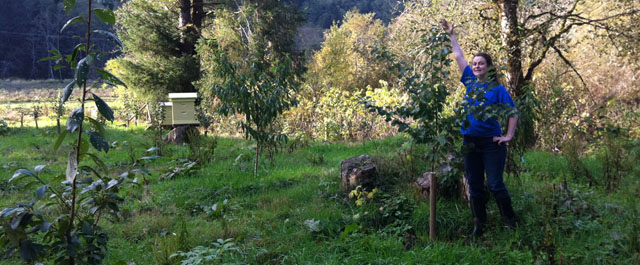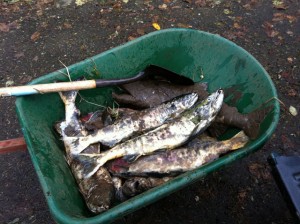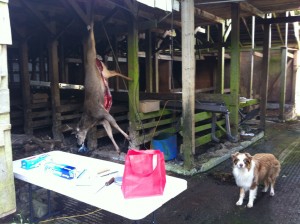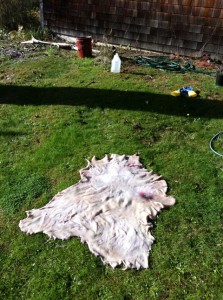This post is dedicated to Katy Clark, who is always waiting for me to post something or, as is my style, a lot of things all at once. This one’s for you.
Dear Blog Readers,
It was a wild ride.
When I received the scholarship for the Stone Barn Center’s 2011 Young Farmers Conference I was stoked! and then sad, because I thought there was no way I could afford to travel there. I called one of my local idea women who said, “I think you should go, and I’m going to give you $20 to get there. Just ask people who you think want to support this.”
It’s interesting how we all tend to get messages, however subtle or overt, about how we shouldn’t ask for help, we should be self-sufficient, and if we want to make something happen we just need to work harder. I’ve asked for money before by way of selling Girl Scout cookies, fundraising for my Catholic school, getting assistance for Temux (the village where we lived and worked in Guatemala), but I’ve never really asked people to give me money for something I want to do that could appear to be just a glorified vacation to New York. I struggled with the idea a lot, and got a lot of encouragement to just go ahead and do it. I mean, the worst people could do is tell me no, right? That was the most amazing part of the experiment, that plenty of people told me yes, and told their friends to tell me yes as well, and send checks in support of the trip for $10 or $20 apiece. The boards members of Food Roots and the Tillamook Farmers Market, friends from town, friends’ friends from Astoria to Maryland, and a few of our patrons all pitched in with funding and wonderful words of encouragement. The experience was humbling and wonderful. This is what we’re supposed to do, help one another where we can when we can. With that, I was off to New York!
From Manzanita, “little apple” in Spanish, it took almost two hours to get to Portland the night before the flight so I could be at the airport for my 6am departure. Two planes, a train, a bike taxi, a second train, and another taxi later and I made it to the hotel in Tarrytown. Directions from the event organizers told me I would come into Penn Station and need to get a taxi to Grand Central Station. Though most of the trip had been very low key, I was filled with awe ascending into the city from the mouth of Penn station. New York City has obtained mythical proportions in my mind over years of reading and hearing about it, for so long the gateway to America, congregation point for many of the world’s greats: leaders, artists, writers, politicians, criminals, intellectuals. Interesting note- it’s the world capital of languages, with over 800 spoken in the city. Columbia University is engaged in a project to record and capture some of the languages that are in danger of dying in the next decade. I wasn’t overwhelmed with the city so much as thrilled, and I found the taxi line immediately, as most of the block down the sidewalk, men and women clad in black, bouncing or grumbling to stave off the chill of evening under all the flashing lights and advertisements.
I pulled out my iPhone to see how long it would take to walk from one station to the other, just over 24 minutes. I stood there looking around, weighing the option. I knew I was much more tired than I felt flying from before sunrise to after sunset, and I wanted to watch the city go by. I saw the traffic cops running off a bicycle taxi operator, and I was intrigued. The taxi line was so long and stodgy. I was indecisive and the bicycle taxi hit the road. I waited in line, watched the milieu. NEW YORK CITY! And another bicycle taxi rode up. It annoyed me that they were being run off. I figured it would be faster to take a bike than a car and I could almost walk from one station to the next in the amount of time it would take to get a taxi, and being pulled by a bicycle I’d still get fresh air. I sprinted out of my place in line and jumped in before the traffic cop became any more aggressive, “Thank you officer, I’m going now,” the operator said as he jumped on his bike. So much skill is involved in maneuvering through the pedestrians, road construction, city traffic that doesn’t really travel quickly anyhow. It reminded me of riding tuk tuks in Antigua, and the city was making me nostalgic for Barcelona as we breezed by a Desigual boutique and then a massive Zara department store. In so many ways cities are the same where ever you go, but I find them energizing as long as I don’t stay too long. And I was only passing through. We rode by an Occupy march—for months I’ve been reading accounts of all the rallies, feeling sympathetic to a lot of the goings on in the Occupy movement. I was amazed to see that there were about three times as many police officers on foot and on motorcycles watching the marchers than there were parading Occupiers. My “driver” dropped me off at Grand Central and thanked me with a friendly smile.
The main terminal with the constellation ceiling caused me to pause and gape a bit before finding the Hudson Metro North line, the commuter train to Tarrytown. Ever since my time in Spain and not one but two mishaps boarding the wrong train, I generally try to operate under the “ask twice rule,” always double confirming from other passengers that I’m on the correct train. I was distracted and neglected to do this before rushing onto the train, and so I spent the next 40 minutes very concerned that I’d boarded the wrong one.
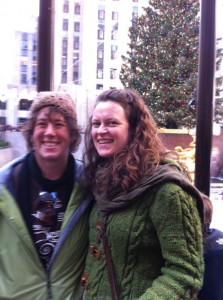 But I hadn’t. Tarrytown, even in the dark, looked amazingly quaint. It was all I could do to order dinner and make it back up to my room where my roommate, Ginger the friendly farmer, arrived shortly thereafter. Ginger was the farmer with whom I interned this summer. She’s farming five acres on an off-the-grid farm for CSA and two local markets. We both applied for scholarships without knowing the other had applied, and we won. No awkward not knowing the roommate. The hotel was awfully posh for our standards, big fluffy feather comforters and too many squishy pillows to use them all. There were not many hours left before we needed to be up again.
But I hadn’t. Tarrytown, even in the dark, looked amazingly quaint. It was all I could do to order dinner and make it back up to my room where my roommate, Ginger the friendly farmer, arrived shortly thereafter. Ginger was the farmer with whom I interned this summer. She’s farming five acres on an off-the-grid farm for CSA and two local markets. We both applied for scholarships without knowing the other had applied, and we won. No awkward not knowing the roommate. The hotel was awfully posh for our standards, big fluffy feather comforters and too many squishy pillows to use them all. There were not many hours left before we needed to be up again.
On Thursday morning our delightful Irish concierge drove us out to the Stone Barn Center, giving a mini-tour of the area: Samuel Clemens’s Mansion, the setting for Washington Irving’s Sleepy Hollow, a bit of American Revolution trivia. We pulled into the center and our mouths dropped. The Center was initially part of the Rockefeller family estate; the Stone Barns where Rockefeller barns. As Ginger put it, “This is where the 1% of vegetables grow.” The grounds were amazing. The name and the place, the Stone Barn, the permanence and reverence it demonstrated for agriculture was apparent and wonderful. The barn courtyard filled with sun and all the young farmers made the atmosphere feel collegiate, and breakfast was served in the hayloft with big steel chandeliers overhead and long narrow tables in a stone hall. It was “Hogwarts for farmers” we decided, and we were both stoked to be there.

All the food for the conference was prepared by the chef of the five star Blue Hill restaurant at Stone Barn Center and most of the food came from the gardens and grounds, plates of apples and pears, eggs from their chickens and scones made in their bakeries, jam from their fruit. It was the five star version of what so many of us attendees hope to accomplish in our own more modest way, and it really prepared us for the day.
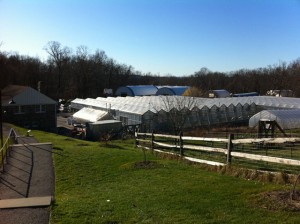 There were so many awesome sessions to choose from that I had to do something to reduce my choices before I was completely overwhelmed, so I crossed off anything that had to do with animal husbandry. We aren’t there yet, and if we ever do get there, it will be an awfully small scale. So…
There were so many awesome sessions to choose from that I had to do something to reduce my choices before I was completely overwhelmed, so I crossed off anything that had to do with animal husbandry. We aren’t there yet, and if we ever do get there, it will be an awfully small scale. So…
My first session was about soil science. I often forget how much I love biology and chemistry until I am in a setting to use it once again. Honestly, the soil is such an amazing, dynamic place. The amount of things we still don’t understand about how and it why it functions the way it does is astounding. We, the people of the world, have made things grow and most people get to eat, more or less, because we’ve managed this. But holy cow is there ever a lot more to learn! We covered a lot of soil organisms and bugs in the talk, but spent a time on myccorrhizea, a type of fungus that lives in harmony with most edible plants to increase the amount of nutrients a plant is able to take in from the soil because the fungus acts as a sort of extension to plant roots. Because of this relationship there are some soil amendments that come with myccorrhizae already in the mix to help it grow in your soil, but watch out! Myccorrhizae is not a friend of brassica plants. It also isn’t entirely benevolent; at the moment the plant starts to weaken, the root fungus quits helping the plant and starts devouring it instead. Hmm, it’s like a badly raised child that depletes its parents resources in old age. Bummer.
Once I was excited about soil activity, I chose to go to a planning session called Bringing Your Farm Down to Earth. This session focused on a unique curriculum used on the east coast and in the midwest to help aspiring farmers define their vision and plan to make their farm dreams a reality. Many of the sessions were sort of advertisements or starter courses for longer-term classes folks can take. They can take these classes if they live somewhere that offers them since they happen only on Saturdays during the winter, as that’s usually best for farmers. The curriculum I saw looked really comprehensive and motivational. It assuaged what is my biggest fear about this dream, that it’s just impossible. I mean, I throw myself into the work, but there’s always this dread in the back of my mind that we might actually be crazy and trying to do something impossible. I keep going because I believe in the reasons why we want this career and lifestyle, but I am often uncertain as to how we’re going to get from here to there. Fletch usually acts unencumbered by this uncertainty, blinded by his ambition (maybe to a fault, but I like to think I temper him?). This plan is really appealing to me on two levels. One, personally it’s going to be excellent going through the materials for our own benefit; and two, because the nonprofit I volunteer for, Food Roots, just won a huge three year grant and part of the grant is farmer education. I found out that there is no one on the west coast qualified to teach this curriculum, and I know for a fact there are A LOT of aspiring farmers out here. And this is one of the main reasons I went to the conference, to be the bridge. This is really effective planning specifically designed for us farmers and farmer wannabes (and those of us in between). Can we start offering these courses out here? I might just know the right people to help jump start this. That’s great news for all of us.
The least useful session of the conference was a great idea: Self-Care and Ergonomics for Farmers, how to work hard without hurting your body. This theme became painfully apparent (really, painfully) to me while working this summer; practicing yoga even for 20 minutes a day would make all the difference in my ability to squat and kneel and bend for 8 hours or more the following day. Yoga focuses a lot on working your body evenly through both sides, and that’s basically what this session told me. Nothing new. I should’ve gone to the compost talk. Luckily, Ginger went to that one to take notes and get the recommended reading list for both of us.
I ended the day with a sobering session on a Bachelor Farmer’s First Year. The bachelor presenter was doing a lot of livestock and a little bit of vegetable production, but I’m here to tell you that growing fruits and vegetables, if you’re really going to do it, isn’t a whole lot cheaper. The guy’s first year of farming on his own equated to, depending on your perspective, a disaster or a very long string of hard learned lessons. His bankbook was in the red by about $30,000. Had I not attended the earlier session on farm planning and lived through this last summer myself, I might have felt ill and needed to excuse myself from the room. According to this example, Fletch and I are right on track.
Thursday evening, after a day of complete overstimulation and massive amounts of sitting, we were given a social hour, served some very tasty local brews, fed dinner, roused by our speaker from Denmark about their large scale farm cooperative that delivers fresh organic produce to 45,000 households, before we moved the tables aside to begin contra dancing. Now, I had never attended a contra dance before, but I did grow up square dancing, and I couldn’t see much of a difference. There was a lot of do-si-do-ing, serenading partners, shaking hands, spinning around etc., a welcome change of the day’s pace to be sure.
By the time we crawled into our fluffy white beds at the hotel, again there were very few hours left for sleeping. A 7:30 am we arose for a breakfast talk by Ginger’s own personal guru, the ever innovative and totally inspiring Maine farmer Eliot Coleman. We made it, a little late, but we got there.
Friday morning was full of excitement too. The first session of the morning was on carbon farming. Carbon farming is a way to farm that incorporates maximum amounts of trees and plants, even with herd integration and grazing, that sucks up maximum amounts of carbon. Generally the trees you incorporate are fruit and nut trees, food bearing in some form for humans and/or animals. Living in dairy country, this is exciting to know, especially when you consider how much rain trees can sequester and we get eight feet (yes, FEET, not inches) of rain a year in this part of Oregon, and muddy pastures are a problem for machinery. Again, while some of the things we learned are directly of interest to me, a lot of the things I learned could potentially benefit other farmers and ranchers that work with Food Roots or the North Coast Food Web. You never know. Learn it, and pass it on. This session was also an advertisement of sorts for a longer class offered through Stone Barn Center in January. Again, no one out here on the west coast is offering this course. So how do we make connections?
The next session was on incorporating herbs into farm and market. This one was just a side interest of mine and that I’m not sure I’ll do much with outside of messing around for hobby on my own. I was hyped up from the previous session that going into a room that had some sort of herbal essence aromatherapy spray and offered freshly made herbal tea while we sat and listened was nice and relaxing.
Lunch was almost a rushed affair as we barreled on to the end of the conference. There was a panel discussion between the head chef, head vegetable grower, and their favorite Cornell University seed breeder. This was an interesting conversation because it revealed one of my personal biases to me. They were talking about the hows and whys of seed breeding. Why are red delicious apples so prevalent in grocery stores? Because they’ve been bread to have super thick skin, travel and store well. They are so very very far from being the tastiest of apples; “Delicious” is quite the misnomer in my opinion. So this particular chef, vegetable grower, and seed breeder were talking about their own interests. The chef wants vegetables bread for flavor and ease of preparation. The grower is trying to work between the two and he wants things that are not impossible to harvest or that need too much pampering. The seed breeder has to breed, bottom line, for what he can get paid to breed, but this guy has found one of the few gigs in the country where he is encouraged to breed for a changing climate and disease resistance to new diseases cropping up, as well as attempt to breed for flavor as per the chef’s wishes. We were made aware that there really aren’t that many seed breeders out there. Quite a few of them are working for BIG AG companies that would like to put pesticides into the genetic makeup of the plants, and breed for chemical resistance to herbicides used in conjunction with growing whatever the crop is. My bias: I want to grow heirlooms whose seeds can be saved, but almost to complete exclusion of hybrids. I remembered that everything has its place, and hybrid or specialty bred seed isn’t something I should completely turn my back on because it has a lot of utility. For the moment, I think I’m still going to stick to heirloom varieties that lend themselves to seed saving.
The final session I chose was one on providing low-income access to local, organic produce through your CSA. This is food justice. At this point, those who do not farm or garden but aren’t middle or upper class cannot afford to buy nutritious, responsibly grown, local produce. How do we bridge this gap? In particular, how could I imagine doing this in Tillamook county, where so much of the year round population is low-income. The session facilitator was Elizabeth Henderson, author of Sharing the Harvest, a book I poured over last winter. Having worked on Ginger’s farm and seen the way her CSA operates, how do we want to structure ours? This is a big question, and one we will spend much of this winter discussing with each other and our trusted cohorts. This session served as a reminder that the work we did in the Peace Corps for health awareness is in many ways just as necessary here in the states. Choosing to farm in the way we want to farm means continuing to build bridges, to educate, and to be forever, in big and small ways, the volunteers we just “finished” being, that is if we really care. Our other option would be to find a wealthy, stable, already educated market in which to sell our produce. Hah, but Whole Foods has a pretty slick marketing campaign in a very cleaned up package to attract a lot of these folks, and well, they are only the minority, so from a business standpoint that would be missing out on a lot of market space. Though my core belief is that food is the basis of our health and wealth (or lack thereof) as individuals, families, communities, and countries. Everyone should have access to nutritious food. And so we keep working.
At this point my brain was so full of ideas and questions it felt fit to explode, so I was thankful the end was near. President of the board for the Stone Barn Center, Fred Kirschenmann (author, Developing an Ecological Consciousness), gave the closing remarks. He is a farmer, ecologist, writer, and activist, and spoke of the need not to “get our economy back on track” but rather to recognize that we need a different economy. Can we create a market in which quality is the driving factor rather than quantity, in which human capital is held in high esteem rather than divorcing people from their work and breaking down large systems into incomplete parts and mechanizing as much as possible? He believed the rather packed audience and the inspiring rise in the number of farmers this year (we’ve doubled from 1% of the population to 2%) is a sign that we can. I think conferences like this one—an excuse to have some fun, yes— are also a sign that we can may move toward a quality based economy that draws heavily on human capital.
The sun was setting through the archway to the Stone Barn Center as we all filed out of the conference and off to our respective destinations, and Ginger and I felt like the fun was just beginning. We had to pass right through New York City to get home!
One of Ginger’s contacts set us up with their cousins as hosts in the city. Our plan was to make it to their house, introduce ourselves, and head out in search of sushi… but you know what they say about the best laid plans. We found our way to their house without a problem, heading right across a festively lit Columbia University campus to their apartment. Judy and John greeted us at the door and when she saw the Peace Corps patch on my back as I walked down their entry hallway, well, the conversation got going and didn’t stop all weekend. Judy was a Peace Corps volunteer herself, Dominican Republic 1966. She happened to be sitemates with Aaron Williams, the current director of the Peace Corps. Her son is an RPCV from Mauritania and her daughter-in-law RPCV Bangladesh. Their apartment is lined with bookshelves, which also gave us plenty to talk about—John is a retired medieval literature professor. Judy and John fixed us dinner and shared their stories with us for a few hours. It was so much fun I wasn’t terribly motivated to head out on the town, but I knew I only had a very short time in this very big city, so Judy and Ginger figured out where we were going that evening—off to Time Square.
 You can imagine the little lives we lead. Fletch and I live in a converted garage turned “cottage” and are just happy it’s twice the size of our last house and has plumbing and heat! Ginger runs an off-grid farm. We took ourselves down to Time Square because we heard about free performance art happenings called Occupy Broadway. As it turns out, Time Square is so ridiculously bright that even in the middle of the night it feels a little like daytime, which made staying awake much easier than I thought it would be.
You can imagine the little lives we lead. Fletch and I live in a converted garage turned “cottage” and are just happy it’s twice the size of our last house and has plumbing and heat! Ginger runs an off-grid farm. We took ourselves down to Time Square because we heard about free performance art happenings called Occupy Broadway. As it turns out, Time Square is so ridiculously bright that even in the middle of the night it feels a little like daytime, which made staying awake much easier than I thought it would be.
We watched several performances until we were uncomfortably cold and my newly returned Peace Corps friend (two weeks “off the boat” so to speak) and re-transplant to New York, Sara, showed up for tea. We planned our Saturday together, and the MoMA was on my list of must-see places; Sara had interned at the MoMA and hadn’t yet returned, so she agreed to be our tour guide.
Saturday morning we were the provincial country folk marveling at city insanity, and it was particularly insane being a sunny, 50 degree Saturday in December on 5th Ave. We gawked at the world flagship for Uniqlo, a Japanese clothing company to rival The Gap, where you can buy cashmere sweaters in every color shade imaginable. I’d heard about this store on NPR and read some things in the New York Times, and it sounded insane, so when we stumbled upon we were attracted like raccoons to tinfoil, into the sparkling disco balls hung like Christmas tree ornaments amidst giant lighted snowflakes. The sales clerks were enacting commercials for customers right on the floor:
“Hey, Karen! You look cold over there! Why don’t you step into our winter clothing section where we have down coats with heat technology for only $79.95!” And I had flashbacks to Paca markets in Guatemala where they sold clothes shipped in from the US, some of it still with original tags on it, sales that never made it off the shelf and were finally abandoned to the markets of developing nation middlemen. I wonder, how will the world absorb all of this? But this disco balls and mirrored elevators were fun. We made our way to Saks to take in their holiday window displays. In search of a restrooms we ventured in, and found that in a city they memorialize the pests they no longer have space for. We found a jade green cutworm with diamond feet in one of the jewelry display cases, and we played The Price is Right on the designer items. Interesting to me that St. Patrick’s Cathedral was just down the street from the likes of Saks and Uniqlo, temples of varying designs. We visited Rockefeller center, where I’d thought I wanted to go ice skating, until I saw how chunky the ice was and how crowded everything was. Then I was content to gawk at their Christmas tree for a while until we met up with Sara for Sushi and a trip to the MoMA.
I love art museums, and I am not really sure why I thought the MoMa was so very important except that I must have internalized lots of things I’ve read and seen over time. But my intuition was right in wanting to see this museum. In addition to the usual wonders of turning a corner and running into VanGogh’s Starry Night and happening upon a room of Monet’s water lilies and getting to see the massive body of work in the de Koonig retrospective, there was a special exhibit, a return 80 years after the initial exhibit of Diego Rivera’s murals painted in NYC in 1930 as a cutting edge exhibit at the newly opened MoMA. Rivera’s murals were varied in subject, the Mexican Revolution, the intense urban development happening in NYC at the time, and his water color journals from a trip to Russia in 1928. I’ve long been fascinated by Frida Kahlo and Diego Rivera, their art and life and times. Seeing his murals up close was amazing, so relevant 80 years after the fact. I’d stood dizzyingly close to so many brush strokes, so many beautiful artists once stood on the other end of those brush strokes. I thought about how close I was to greatness only to realize that I am, that we are all, part of that greatness. The beauty reflected in the art is the beauty we all participate in every day by living. Powerful stuff. I felt so alive and energized coming out of the museum into the dark city.
We grabbed some street food and headed to the TKTS office to see if we could snag some cheap tickets to an evening theater performance. And there again we had success, though “cheap” on broadway, or in the city for that matter, is very relative…
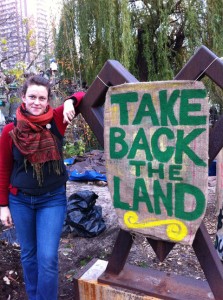 Sunday was not destined to be a tourism day. We were on a mission. After a little brunch with Sara at an English tea spot, we toured the East village on foot, ran into a farmers market, and explored all the wonderful art spaces and community gardens in the area as we made our way to one in particular called La Plaza Cultural, where the Occupy Food and Farmers march was to begin at 2pm. We watched farmers and ranchers from all over the country, some that had never been to NYC before the rally and march gave the reason to come, talk about their food justice work alongside community garden organizers and restauranteurs and community organizers who want nutritious food in school lunches. It was great. And once we were all sufficiently grounded about why were at this march, the drums started to beat and Ginger and I got close to the head of the line and danced our way through the street behind them. We were disappointed to be caught without signs, but someone at the garden had made extra Lettuce Beet the System signs and handed one to each of us. We snaked through the streets for a little more than two hours, all the way to Zuccati Park in the financial district, with very solemn police escorts the whole time. They helped stop traffic and watched us maintain a pretty neutral presence as we marched our messages past multi storied McDonalds and Whole Foods and Wall Street. We chanted until our voices just about gave out.
Sunday was not destined to be a tourism day. We were on a mission. After a little brunch with Sara at an English tea spot, we toured the East village on foot, ran into a farmers market, and explored all the wonderful art spaces and community gardens in the area as we made our way to one in particular called La Plaza Cultural, where the Occupy Food and Farmers march was to begin at 2pm. We watched farmers and ranchers from all over the country, some that had never been to NYC before the rally and march gave the reason to come, talk about their food justice work alongside community garden organizers and restauranteurs and community organizers who want nutritious food in school lunches. It was great. And once we were all sufficiently grounded about why were at this march, the drums started to beat and Ginger and I got close to the head of the line and danced our way through the street behind them. We were disappointed to be caught without signs, but someone at the garden had made extra Lettuce Beet the System signs and handed one to each of us. We snaked through the streets for a little more than two hours, all the way to Zuccati Park in the financial district, with very solemn police escorts the whole time. They helped stop traffic and watched us maintain a pretty neutral presence as we marched our messages past multi storied McDonalds and Whole Foods and Wall Street. We chanted until our voices just about gave out.
Taking part in this march was interesting. My first demonstration activity was years ago, in protest to the idea of occupying Iraq the second time around in the winter of 2003. I traveled with fellow Knox students in 15 passenger vans through heavy snow on the Illinois planes into Damen St. in Chicago. My parents were not happy about this, but I was adamant. The mixed messages I received from so many directions growing up all collided in this activity: you have the right to free speech; speak your mind; be truthful; be loving; be peaceful; you shouldn’t speak your mind too loudly: you shouldn’t call too much attention to yourself and your opinions; you should avoid being seen as a “rebel rouser”; protests and therefore protesters are bad. What’s interesting to me is that while Occupying I felt a little off knowing that quite a few people I know and love and respect might find it juvenile, ridiculous, and/or annoying that I was taking part is this demonstration. The things is folks, I do care what you think to a certain degree maybe more often than I should. I kept checking in with myself. Am I doing anything I don’t believe is okay? Am I saying anything I don’t actually agree with? Am I acting in a way that befits my personal attitudes and beliefs? Once checked in I would go back to the drum beat and the chants and scenery through which we moved. I thought about the term protest, how divisive it feels, how confrontational. We are protesting, or speaking out about things with which we do not agree, but I started to think of the word manifestacíon, used in Spanish where we would use the word protest. I started thinking, here we are manifesting what we believe in. We are demonstrating in words and action that we believe there is a better way. This is not a confrontation, this is the dream we’re all working toward. Maybe I was rationalizing too much because even as opinionated as I am, I don’t like rocking the boat at the risk of making others seasick.
At one point I asked myself again, “why are you doing this, Emily?” And the answer came out something like this. I believe food is the most essential thing, the basis of our health and wealth. Food is also our most direct connection to the animal and plant world. I believe the earth that feeds us deserves healthy attention and loving care for growing the food that feeds us.I believe we have some seriously bad things happening in our local, national and international food systems. I want us all to enjoy something better—better food on a local, national and international level. I want everyone I love and care about, everyone I know and even those I don’t know, to enjoy good health through a lifelong healthy diet. I believe everyone deserves this. So why was I protesting/demonstrating/manifesting when it’s so annoying to some and so misconstrued by much of the media? Because I love you. Because I have a lot of love and admiration and respect for you, my fellow humans, and the world.
And the end of the march we were starving and we had an hour to get to another theater for a very off-broadway show with the Bread and Puppet Theater Company, but we managed to do it all. Sara met up with us again in the evening after spending the afternoon away, and she took a picture of us at dinner with our signs, one of which we left at the great little restaurant where we ate and the other we left on the bread table after the puppet theater show was over.
We had had so much fun with our adventures and conversations in the evening and morning with Judy and John that we felt we were falling in love, that it was only appropriate to take them courting/goodbye gifts. On the way home from the theater we picked up flowers and wine to go with the box of chocolates we’d gotten them earlier in the day. Judy and John were waiting up for us. We had ice cream and more conversation until they could hardly stay awake and I just had time to shower and pack and lay down for an hour before catching my shuttle to the airport for home and Fletch. It was a wild and wonderful ride. Thank you to all who made it possible.
Now, as seems perpetually the case, we have a LOT of homework to do.
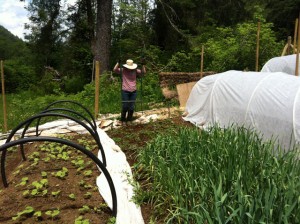 When you go out to dinner and don’t want to take the kids, you get a babysitter. When you have to leave the farm for a week right in the middle of peak season, you need a Farmsitter. We just got back from two weddings in the midwest, so that is just what we did.
When you go out to dinner and don’t want to take the kids, you get a babysitter. When you have to leave the farm for a week right in the middle of peak season, you need a Farmsitter. We just got back from two weddings in the midwest, so that is just what we did.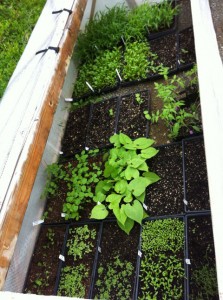 Not everything went perfectly, though. A day or two before we got back, a rodent of unusual size (ROUS?) burrowed into the mini-greenhouse, and selectively mowed down some of our seedlings, leaving little to no survivors. All looks OK in the picture at first glance, until you notice that the yellow crookneck squash, Marketmore cucumbers, and Butternut squash are entirely gone. All. We are extremely sad about it; at this point in the season, it’s too late to redo the slow-growing Butternuts, making this season the second “fail” in a row for them. At least the popcorn was untouched (popcorn has failed for us every season so far, for a different reason every time. It’s kindof like Kenny from South Park). The cucumbers will get reseeded, but we will have none to sell for the first month of market at least. Pretty much the same story for the crooknecks, too, and one of our restaurant clients was especially interested in buying those. Ugh.
Not everything went perfectly, though. A day or two before we got back, a rodent of unusual size (ROUS?) burrowed into the mini-greenhouse, and selectively mowed down some of our seedlings, leaving little to no survivors. All looks OK in the picture at first glance, until you notice that the yellow crookneck squash, Marketmore cucumbers, and Butternut squash are entirely gone. All. We are extremely sad about it; at this point in the season, it’s too late to redo the slow-growing Butternuts, making this season the second “fail” in a row for them. At least the popcorn was untouched (popcorn has failed for us every season so far, for a different reason every time. It’s kindof like Kenny from South Park). The cucumbers will get reseeded, but we will have none to sell for the first month of market at least. Pretty much the same story for the crooknecks, too, and one of our restaurant clients was especially interested in buying those. Ugh.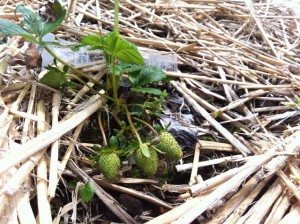 That aside, things are proceeding apace. Our certified-for-trade scale is on order, as is the paperwork from the state to operate it. Other knicknacks for the market are coming together as well, such as the canopy to cover our stall and nifty Peace Crops stickers to cover our belongings, bumpers, and friends. And the produce is keeping pace: the strawberries are starting to form, so I need to go out and get some bird netting to cover them.
That aside, things are proceeding apace. Our certified-for-trade scale is on order, as is the paperwork from the state to operate it. Other knicknacks for the market are coming together as well, such as the canopy to cover our stall and nifty Peace Crops stickers to cover our belongings, bumpers, and friends. And the produce is keeping pace: the strawberries are starting to form, so I need to go out and get some bird netting to cover them.
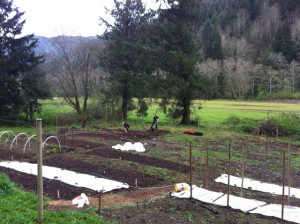
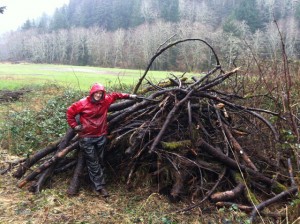
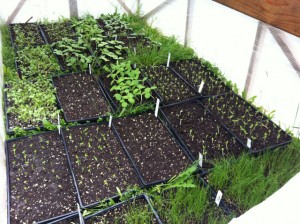
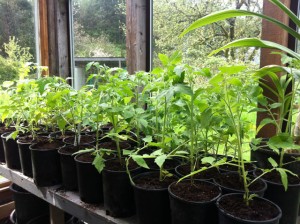
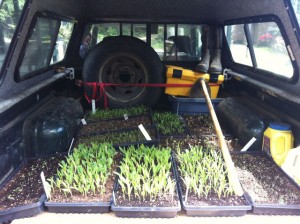
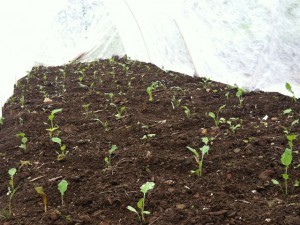
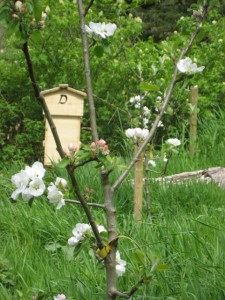
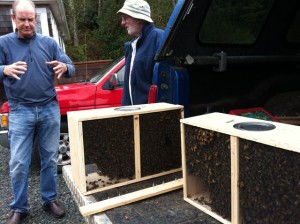
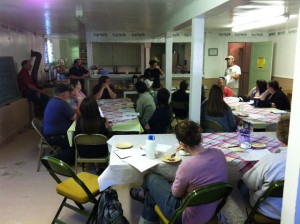
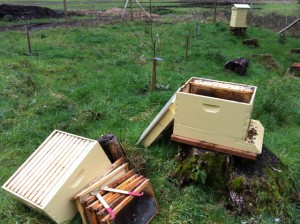
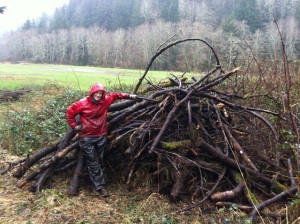
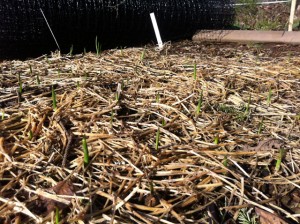
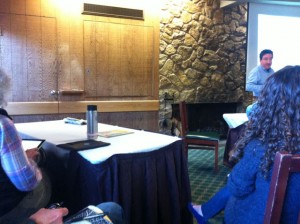

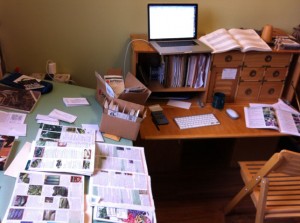



 You can imagine the little lives we lead. Fletch and I live in a converted garage turned “cottage” and are just happy it’s twice the size of our last house and has plumbing and heat! Ginger runs an off-grid farm. We took ourselves down to Time Square because we heard about free performance art happenings called Occupy Broadway. As it turns out, Time Square is so ridiculously bright that even in the middle of the night it feels a little like daytime, which made staying awake much easier than I thought it would be.
You can imagine the little lives we lead. Fletch and I live in a converted garage turned “cottage” and are just happy it’s twice the size of our last house and has plumbing and heat! Ginger runs an off-grid farm. We took ourselves down to Time Square because we heard about free performance art happenings called Occupy Broadway. As it turns out, Time Square is so ridiculously bright that even in the middle of the night it feels a little like daytime, which made staying awake much easier than I thought it would be.
